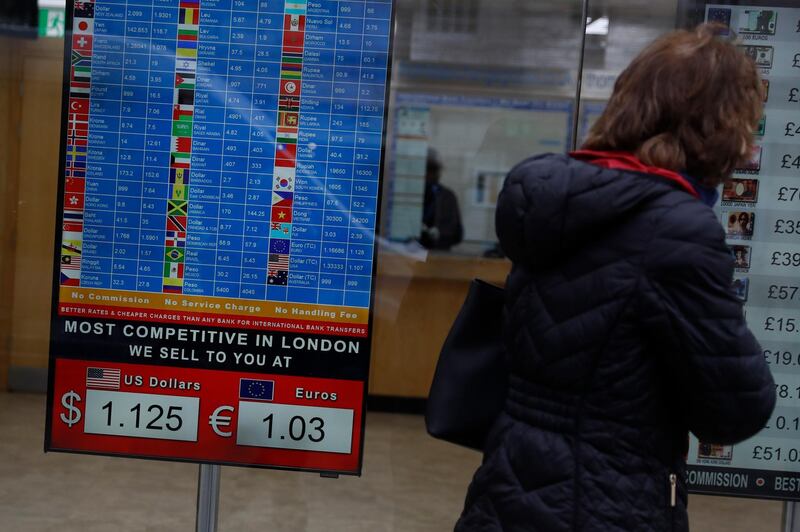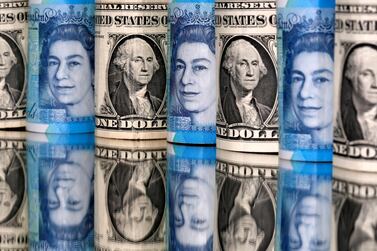Central banks have moved into overdrive in the past week to contend with the fallout from coronavirus, and in the process they have almost exhausted their official policy tools.
Despite these efforts, financial markets remain vulnerable as there is no end in sight to the pandemic that is wreaking havoc in the global economy. With the world now entering a twilight zone of lockdowns and social distancing, liquidity is now becoming the paramount concern to markets, with the strengthening dollar reflecting this over the past week.
Even though official interest rates have been cut to zero or below in most developed countries, the US Federal Reserve and other central banks have begun to revisit their policy measures from the great financial crisis, and are coming back with even more imaginative steps to keep the markets open and to offer safety nets to businesses and individuals while the crisis persists. In many ways these measures are much more powerful than interest rate cuts, which have remained low and ineffective for most of the last decade.
The scramble for US dollars by investors seeking liquidity was one of the key features of the markets last week. This demand helps to explain what can sometimes look like irrational moves across asset classes.
Losing positions in equities, for example, gives rise to margin calls requiring dollars, which leads to profitable positions in other asset classes such as gold and treasury bonds to be closed out. This is exacerbated by the impact of extra government borrowing for stimulus measures, and is also intensified by the impact of the lower oil price reducing the amount of petrodollars circulating in the market.
Another by-product is upward pressure on US Libor, as investors bid up short-term dollar borrowing at rates of above 1 per cent, even after the Fed funds rate was cut to just 0.0-0.25 per cent at the start of last week.
Hence the importance of the Fed’s other recent steps to boost liquidity in the repo market across the whole of the treasury curve and in the commercial paper market, primary dealer market and municipal bond markets. Collectively these are perhaps far more significant than the cuts to official policy rates. Even more important than these has been the expansion of US dollar liquidity swap arrangements from nine to 15 central banks.
On top of the $700 billion (Dh2.57 trillion) of asset purchases unveiled by the Fed last week, the European Central Bank and the Bank of England have also moved up a gear launching its own €750bn (Dh2.96tn) and £200bn (Dh855.7bn) asset purchase programmes. The European move repaired the damage from Christine Lagarde’s first ECB press conference, and the limited options it had available in terms of cutting their official interest rates.
The UK pound was the biggest casualty of the US dollar’s surge, falling 6 per cent last week. Just as the markets were becoming concerned about a shortage of dollars, they also began to anticipate that London could face a lockdown further reducing liquidity in the global forex market. It was also negatively affected by the UK’s approach to the whole crisis which was criticised for only last week adopting emergency measures already deployed in other parts of the world.
The dollar has rotated in its role as a safe-haven during this crisis, benefiting to some extent at the start of the outbreak when coronavirus was largely perceived as an overseas issue. Then it lost ground after the coronavirus started to affect the US, and as interest rates were cut close to zero.
Even with such low interest rates, however, the dollar then found itself in demand as the ultimate funding currency, the safety valve in the global financial system, as global asset markets began to plummet. With these latest measures, the dollar has shown some tentative signs of stabilising, but it is still too early to conclude that these stresses could not return.
At the end of the week, the commitments by central banks and governments to backstop financial markets and key parts of their economies, from businesses to employees, appeared to be achieving some traction in the markets. That the euro and the UK pound were off their lows and the dollar softened a little were a signal of this, alongside more measured moves in stocks and a recovery in oil prices. The trouble, as we all know, is that in this crisis there is probably still a very long way to go.
Tim Fox is chief economist and head of research at Emirates NBD







